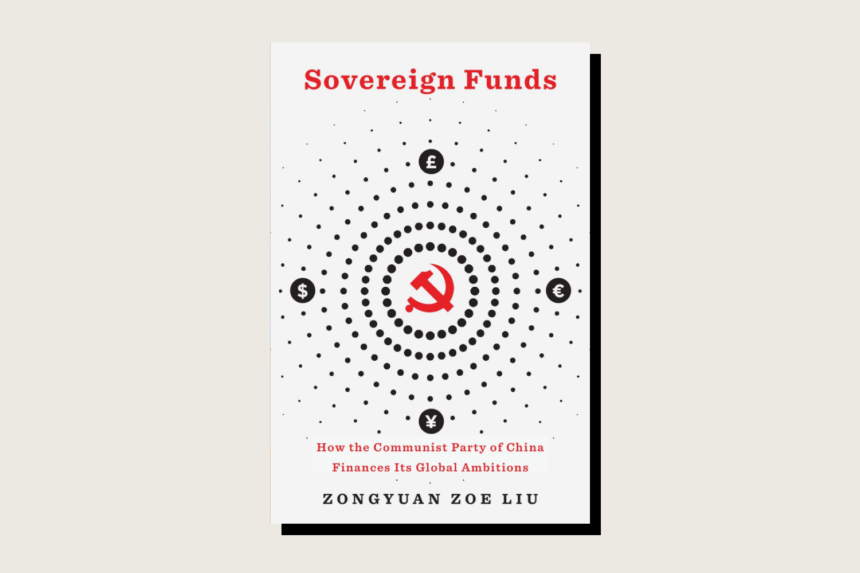Zongyuan Zoe Liu’s book – Sovereign Funds: How the Communist Party of China Finances Its Global Ambitions- explores the role of China’s sovereign wealth funds (SWFs) in supporting the Communist Party of China’s (CCP) global ambitions. It delves into how these funds, which manage over $2 trillion, are used to bolster China’s economy and extend its financial influence worldwide.
Key Points
-
Origins and Objectives of China’s SWFs:
- Formation and Purpose: The creation of China’s SWFs was driven by a desire to manage the massive reserves accumulated from trade surpluses rather than investing them in low-yielding U.S. Treasury bonds. The China Investment Corporation (CIC) was established in 2007 with a focus on overseas investments, while the State Administration of Foreign Exchange (SAFE) manages another significant portion of China’s financial assets.
- Initial Investments: The early focus was on commercial investments rather than geopolitical strategies. The funds aimed to stabilize China’s financial markets and manage risks associated with their vast reserves.
-
Domestic Impact:
- Financial Stability: Chinese SWFs have played a critical role in stabilizing the domestic economy, especially during financial crises. For instance, Central Huijin Investment, a part of CIC, intervened multiple times to support Chinese stock exchanges and state-owned banks.
- Investment in Key Sectors: SWFs have invested heavily in Chinese technology firms like Alibaba and Didi Chuxing, aligning with China’s strategic goals to advance in high-tech industries.
-
International Strategy and Influence:
- Global Investments: Liu examines how China’s SWFs have targeted investments in global markets, including stakes in Western financial institutions and energy companies. These investments are intended to increase China’s influence and secure strategic assets.
- Belt and Road Initiative (BRI): A significant portion of SWF investments has been directed toward the BRI, funding infrastructure projects in various countries to bolster economic ties and expand China’s global influence.
-
Challenges and Failures:
- Investment Missteps: The book details several poor investment decisions, such as those made during the global financial crisis. Investments in firms like Morgan Stanley and Blackstone, as well as Canadian energy companies, faced significant losses.
- Political Backlash: Efforts to use SWFs for political leverage have often backfired. For example, attempts to influence Costa Rica’s diplomatic policies led to negative publicity and diplomatic fallout.
-
Political and Economic Risks:
- Geopolitical Tensions: Chinese SWFs have faced scrutiny and resistance in Western countries, where investments are often viewed with suspicion due to concerns about national security and economic influence.
- Vulnerabilities: Investments abroad expose China to geopolitical risks, such as the freezing of assets in response to political conflicts, as demonstrated by the international reaction to Russia’s invasion of Ukraine.
-
Comparative Analysis:
- Comparison with Other SWFs: Liu contrasts China’s approach with other countries’ SWFs, noting that while China’s funds have been used to advance national strategic interests, they also face significant challenges and criticisms. For instance, Norway’s SWF focuses more on domestic social safety nets, which contrasts with China’s more geopolitical approach.
Criticisms and Observations
- Alarmism vs. Reality: Liu’s portrayal of China’s SWFs as a major tool for advancing global ambitions may sometimes seem alarmist. While these funds do play a role in supporting China’s global strategies, their effectiveness and impact are mixed and subject to significant challenges.
- Involvement of Western Capitalists: Liu highlights the relationship between Chinese officials and Western financial leaders, noting that while this relationship might have bolstered certain individuals in the West, it hasn’t always translated into substantial benefits for China.
Conclusion
Liu’s book provides an insightful examination of how China’s SWFs contribute to its global financial strategy. While these funds are indeed instrumental in supporting China’s domestic economy and international ambitions, they also face considerable risks and challenges. The book serves as a crucial resource for understanding the complex role of sovereign wealth funds in modern geopolitics.







